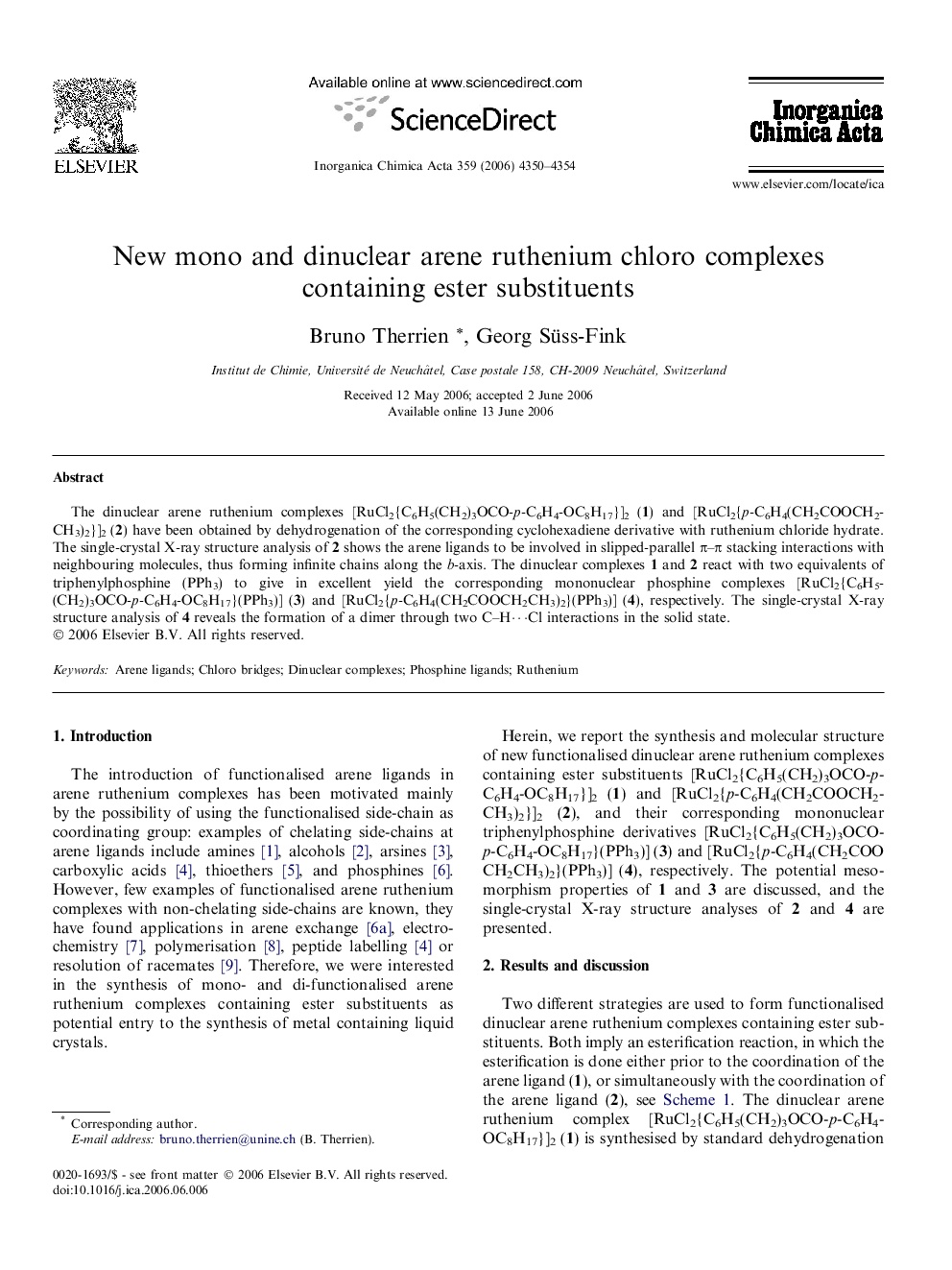| Article ID | Journal | Published Year | Pages | File Type |
|---|---|---|---|---|
| 1312873 | Inorganica Chimica Acta | 2006 | 5 Pages |
The dinuclear arene ruthenium complexes [RuCl2{C6H5(CH2)3OCO-p-C6H4-OC8H17}]2 (1) and [RuCl2{p-C6H4(CH2COOCH2CH3)2}]2 (2) have been obtained by dehydrogenation of the corresponding cyclohexadiene derivative with ruthenium chloride hydrate. The single-crystal X-ray structure analysis of 2 shows the arene ligands to be involved in slipped-parallel π–π stacking interactions with neighbouring molecules, thus forming infinite chains along the b-axis. The dinuclear complexes 1 and 2 react with two equivalents of triphenylphosphine (PPh3) to give in excellent yield the corresponding mononuclear phosphine complexes [RuCl2{C6H5(CH2)3OCO-p-C6H4-OC8H17}(PPh3)] (3) and [RuCl2{p-C6H4(CH2COOCH2CH3)2}(PPh3)] (4), respectively. The single-crystal X-ray structure analysis of 4 reveals the formation of a dimer through two C–H⋯Cl interactions in the solid state.
Graphical abstractThe dinuclear arene ruthenium complexes [RuCl2(C6H5(CH2)3OCO-C6H4-OC8H17)]2 and [RuCl2{p-C6H4(CH2COOCH2CH3)2}]2 have been obtained by dehydrogenation of the corresponding cyclohexadiene derivative with RuCl3 · xH2O. These dinuclear complexes react with two equivalents of PPh3 to give the corresponding mononuclear phosphine complexes [RuCl2(C6H5(CH2)3OCO-C6H4-OC8H17)(PPh3)] and [RuCl2{p-C6H4(CH2COOCH2CH3)2}(PPh3)], respectively.Figure optionsDownload full-size imageDownload as PowerPoint slide
